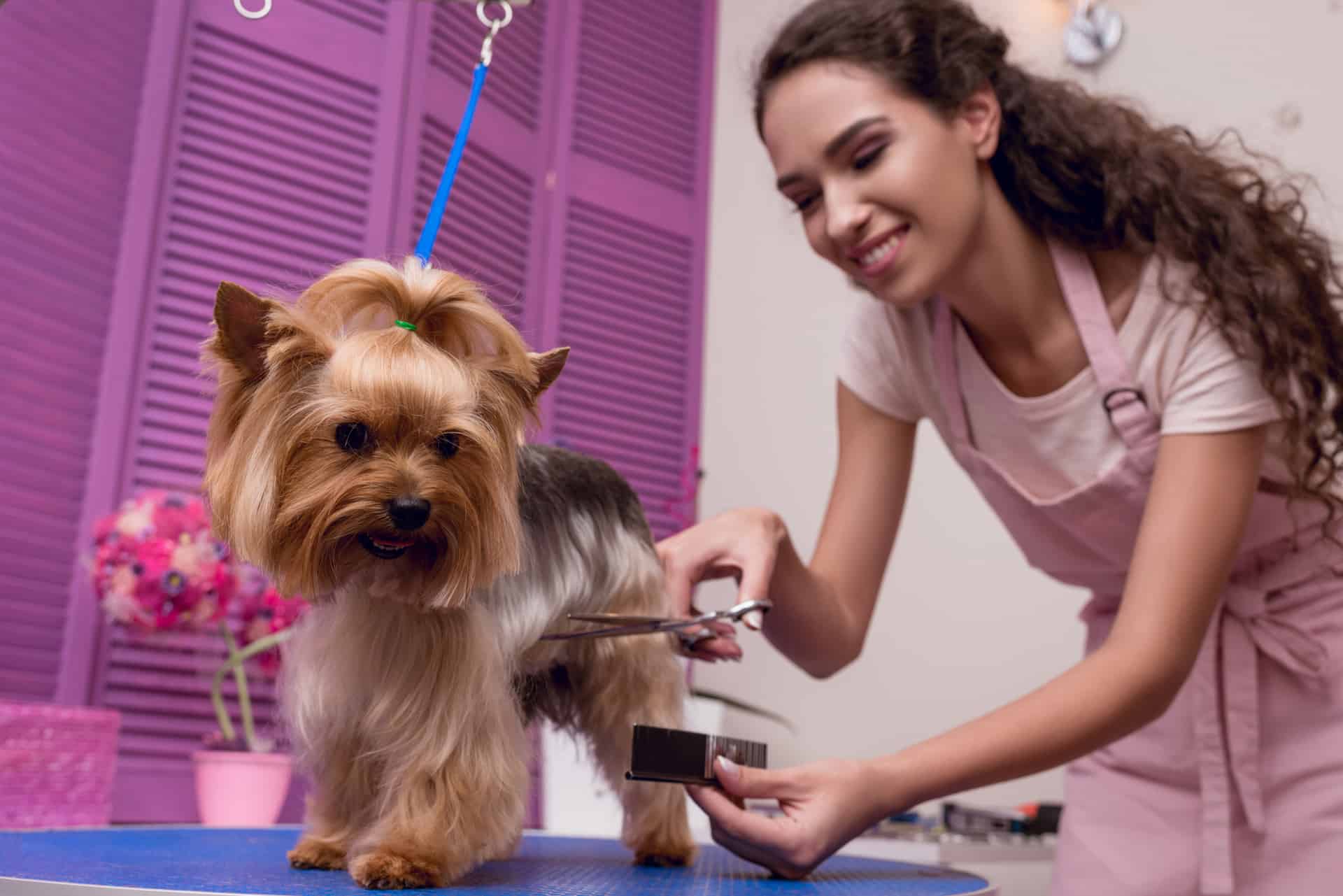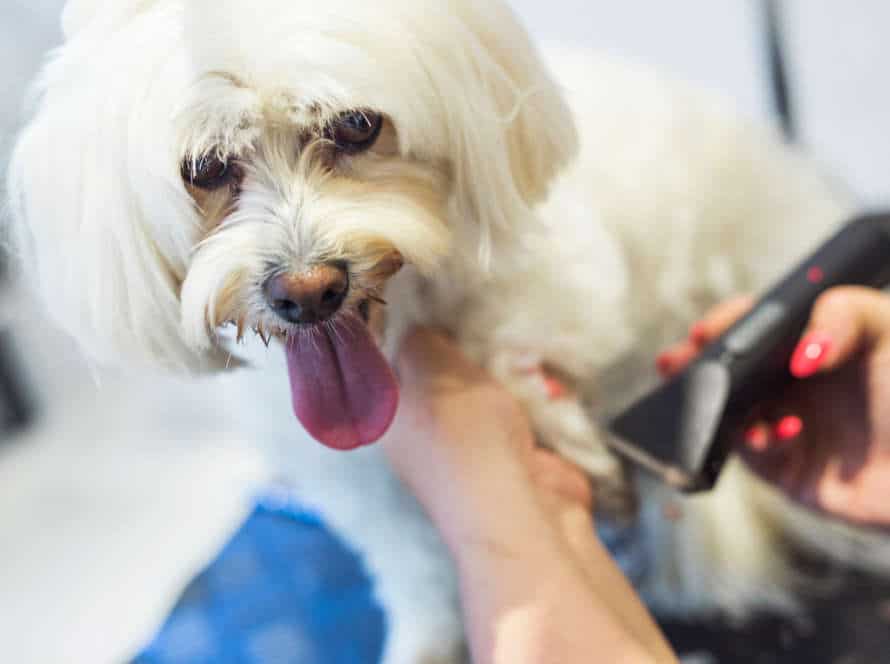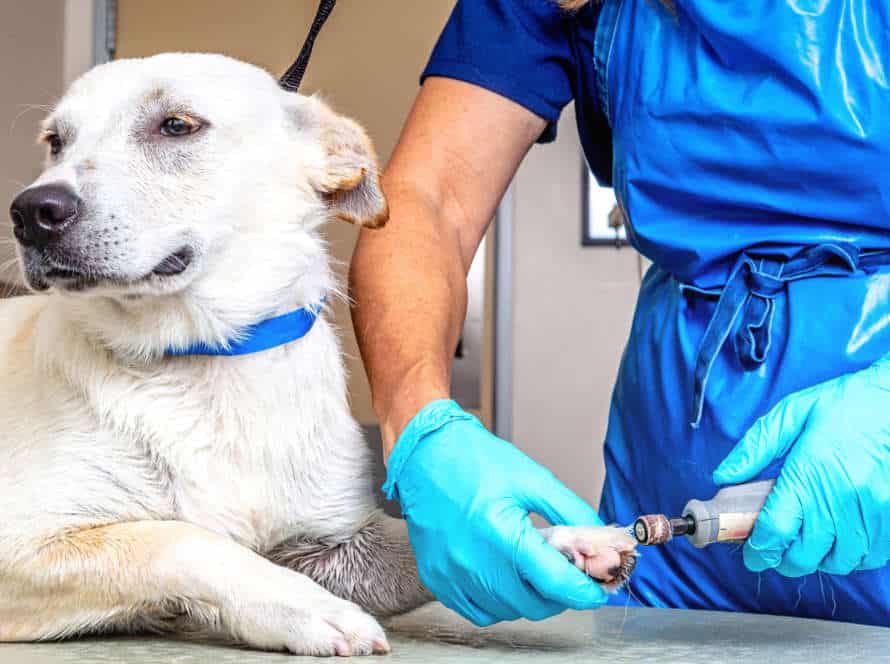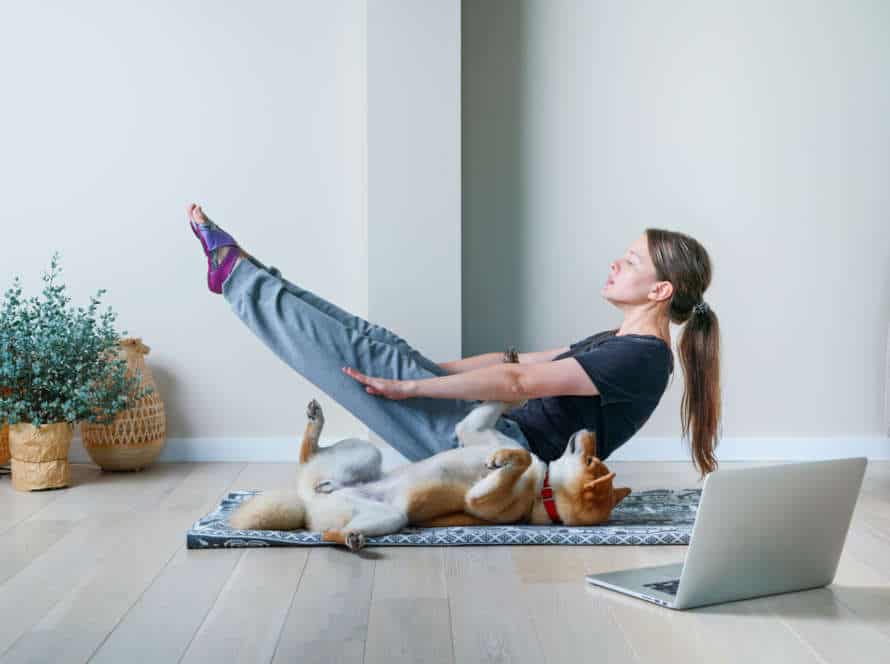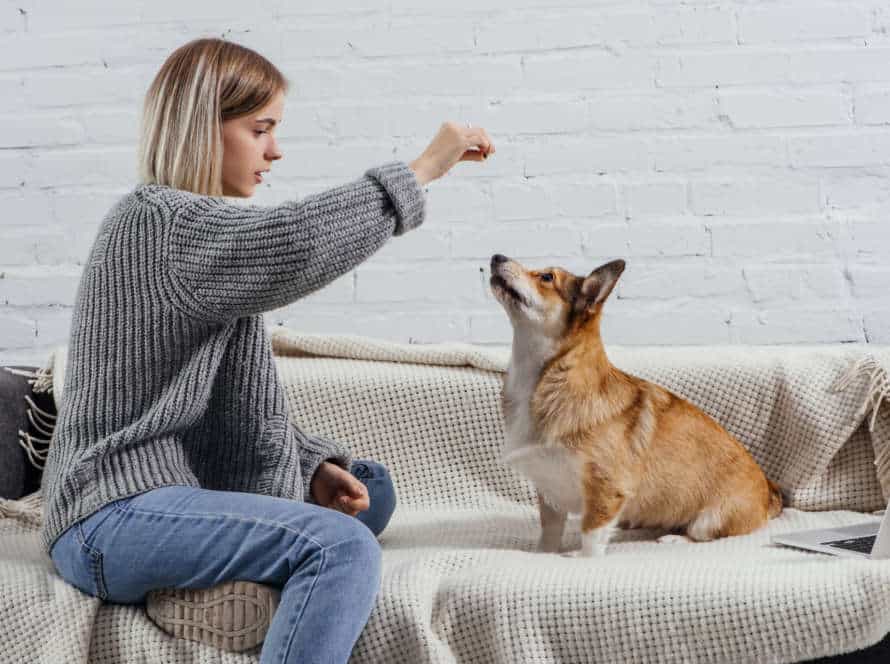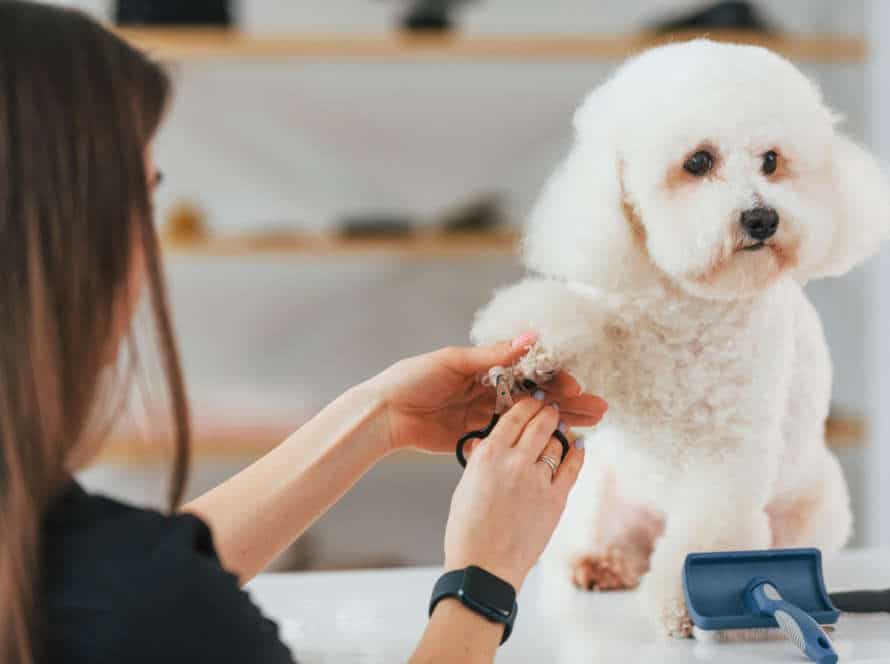Grooming Your Dog: The Basics for a Healthy, Happy Pet
Grooming your pup is a must! It keeps them healthy and smiling. Brushing, bathing, nail trimming, ear cleaning, and teeth cleaning: all essential for your dog’s wellness.
Brushing: Removes dirt, dead hair, and tangles. Plus, it spreads natural oils across the skin, making their coat look shiny and gorgeous.
Bathing: Every 3-4 months, or when they’re dirty or smelly. Use dog-specific shampoo. No human shampoo – it can cause skin irritation.
Nails: Long nails can be painful and make walking difficult. Trim ’em before they reach the ground.
Ears: Check ’em weekly and clean if needed. Use dog-specific ear cleaning solution.
Teeth: Keep ’em clean to avoid dental issues. Regular dental chews help.
Pro Tip: Stick with dog-specific grooming products. Make grooming a fun and calming experience. You and your four-legged pal will love it!
Understanding the Benefits of Regular Dog Grooming
Grooming your pup is a must! It keeps them healthy and joyful. Regular sessions help keep their fur looking great, and prevent parasites, diseases, dirt, and junk from building up. Plus, it strengthens the relationship between you and your furry friend. Here, you’ll learn about the amazing advantages of grooming your pup regularly.
Promotes good health and hygiene
Grooming your pup has many rewards – physical and mental.
Physically, it cleans dead skin cells, matted fur and may prevent parasites, infections and detect lumps or bumps. Mentally, it reduces anxiety and strengthens the bond between you and your pup.
Here’s the basics:
- Brushing: Daily brushing removes dirt, loose fur and tangles, keeping pup’s coat shiny and healthy.
- Bathing: Regular baths keep pup clean and warded off any parasites or infections. Use shampoo and conditioner specifically for dogs.
- Nail Trimming: Long nails cause discomfort and pain, and can even lead to infection. Use specially designed clippers and trim pup’s nails every couple of weeks.
- Ear Cleaning: Regular ear cleaning prevents infection, removes wax build-up and aids hearing. Use a gentle ear cleaner.
Pro Tip: Make grooming fun with treats and positive reinforcement. Keep sessions short for best results.
Minimizes shedding and hair matting
Regular dog grooming has lots of benefits. It minimizes shedding and matting. Plus, it makes it easier to keep your pet’s coat in shape and there’s less hair around your home. Here’s why:
- Brushing removes dead fur from the coat, reducing shedding. It also stops matting and tangling, which can cause skin irritations and hot spots.
- Bathing keeps the coat clean and healthy. It can help avoid skin infections and other health issues.
- Trimming nails and cleaning ears can prevent infections and discomfort.
So, regular grooming is key for a healthy, happy, and long life for your furry friend. It helps them look and feel their best.
Helps to identify potential health problems
Reg’lar dog groomin’ helps spot poten’tial health prob’lems in yer pet. Groomin’ involves way more than just keepin’ ’em lookin’ clean; it gives ya a chance t’examine skin, coat, an’ overall health.
Issues like skin irritations, bumps ‘r lumps, fleas ‘n ticks, an’ ear infections can be spotted early through regular groomin’. Also, it helps keep nails healthy, prevent matting, an’ identify dental issues.
Reg’lar groomin’ not only maintains ya pet’s physical health, but it also promotes a strong bond b’tween you two. It’s a time t’show ’em love ‘n affection while carin’ for their wellbeing.
Pro Tip: Set up a regular groomin’ routine based on breed, coat type, ‘n activity level. This’ll help keep ’em healthy ‘n happy.
Essential Dog Grooming Supplies Needed
Grooming your pup is key! Don’t forget this vital task. It’s not just about keeping your dog clean and content, but also helps prevent skin issues and other health problems. So, what do you need to properly groom your furry friend? Here’s a look at the essential supplies you must have! These will ensure your pup is healthy and clean.
Brush and Comb
Brushes and combs are must-haves for keeping your pup happy and healthy. They help remove dirt, debris and shed hair. Here are some types of brushes and combs:
- Slicker brush – for medium to long-haired dogs. Removes mats and tangles.
- Bristle brush – for short-haired dogs. Removes loose hair and dirt.
- Undercoat rake – for thick-coated dogs. Removes dead hair, dirt and debris from the undercoat.
- Shedding Tool – for shedding dogs. Removes loose undercoat hairs without harming the topcoat.
- Comb – detangles mats and removes any extra hair.
Pro tip – always brush or comb starting from the top and move down towards the belly. Soft strokes are key!
Shampoo and Conditioner
Shampoo and conditioner are essential for dog grooming. You need to choose the right one for your dog’s skin type and coat. Avoid harsh chemicals and potential irritations. Look for products made just for dogs that are gentle and non-toxic.
When bathing your pup, wet their coat with warm water. Apply shampoo, working it into a lather. Be sure to avoid their eyes, ears and nose. Thoroughly rinse with warm water. Repeat with conditioner, focusing on the fur tips.
A well-maintained coat looks good and protects against dirt and harmful elements. For extra softness and shine, use a detangler spray or leave-in conditioner.
Nail Trimmer and Styptic Powder
Dog nail trimming is essential for your pup’s health, happiness, and comfort. So, every pet parent needs a nail trimmer and styptic powder in their grooming kit!
Trimmer: Pick one that’s the right size for your breed and size pooch. Small clippers are ideal for small dogs and puppies, while bigger ones are better for larger breeds. Cut the nail below the quick – the sensitive part of the nail with blood vessels and nerves.
Styptic Powder: Accidents happen, so have styptic powder on hand. If you cut the quick, dip the bleeding nail and apply pressure for several minutes to stop the bleeding.
With these tools, plus a bit of patience and practice, you’ll be a pro at grooming your dog’s nails in no time!
How to Bathe Your Dog
Pet parents must bathe their pup! ‘Tis essential. Not only cleanliness, but it stops germs spreading too. To have a happy hound, the right way to bath is key. We’ll now look at how to do it and the items needed!
Preparing the bathing area
Preparing the bathing area is essential for both you and your pup’s safety and comfort. Here’s what to consider:
- Choose a spot: Pick a space that can fit your pup and is simple to clean, like a shower, bathtub, or backyard.
- Gather what you need: Have shampoo, towels, brush, detangler, and a rubber mat or towel ready.
- Water temp: Make sure the water isn’t too hot or cold – sensitive dogs don’t like extreme temperatures.
- Secure your pup: If you’re bathing in a tub, use a rubber mat or towel to stop slipping.
- Pro tip: Have treats on hand to reward your pup for good behaviour during and after the bath.
Brush your dog before bathing
Brushing your pup’s coat is a must before you give them a bath. This will ensure their fur is clear of dirt and tangle-free. Brushing gets rid of any dead hair, dirt, and tangles that could keep the shampoo from reaching their skin.
Follow these steps to brush your pup before bathing:
- Grab either a slicker brush or a comb, depending on the type and length of their fur.
- Start from the top of their body and move downwards, brushing in the same direction of their fur.
- Focus on areas with tangles and mats, such as behind their ears, between their legs, and under their belly.
- Once you’ve finished brushing, you can start their bath. Knowing that their fur is now clean and free of tangles.
Wet and lather your dog
Getting your pup ready for a bath? Here’s how to do it:
- Check the water temp first. Dogs like warm water like their body temp.
- Wet their body, but keep it away from eyes and ears.
- Apply shampoo – start at the neck, work downward. Lather it up, but be gentle so as not to irritate the skin.
- Massage the shampoo in – chest, belly, legs, tail.
- Rinse off with warm water. Make sure there’s no residue left.
- Dry them up with a towel or a blow dryer. Pay special attention to their underbelly to avoid irritation or infection.
If you follow these steps, you and your furry friend are sure to have a pleasant experience!
Trimming Your Dog’s Nails
Trim your pup’s nails for both your sakes! Nails that are groomed are less likely to cause scratches. It also helps your pup to walk comfortably. Even if your pup is used to nail trimming, it can still be tough. Here, we’ll go over the basics of trimming your dog’s nails properly.
The importance of trimming dog nails
Trimming your pup’s nails is key for their health. Not doing so can lead to pain and mobility issues. Here’s why it’s important:
- Helps stop overgrowth: Long nails can get into their paw pads, causing pain or infection.
- Avoids scratches: Long nails can scrape floors, furniture, and even you.
- Encourages good posture: Long nails can make it hard for dogs to walk or sit right.
- Reduces the risk of hurt: Long nails can snap, causing pain and bleeding.
When trimming, use the right tools and technique. Trim every 4-6 weeks, or as necessary. Pro tip: Reward them with treats and praise – it’ll make the process smoother and more fun!
The tools needed for trimming dog nails
Trimming your pup’s nails is key for their wellbeing and comfort. Gather the following items to do it at home:
- Dog Nail Clippers – not human ones!
- Styptic Powder – just in case you cut the nails too short and hit the quick.
- Treats – reward your dog for good behavior.
- Towel – keep them from slipping while you work.
- Optional: File, Dremel Tool, or Grinder – to make the edges smooth.
With these, and patience, you can keep your pet’s nails trim and healthy right at home.
The proper technique for trimming dog nails
Trimming your pup’s nails is a vital part of dog grooming. So, here’s the proper way to do it:
- Acclimate your pup to the process by getting them used to handling their paws.
- Use dog-specific nail clippers, not human ones. They provide more stability and control.
- Look for the ‘quick’ (pink part of the nail containing blood vessels and nerves). Don’t cut it – it can cause pain and bleeding.
- Using guillotine or scissor-style clippers, cut a small bit of the nail. If you accidentally cut the quick, apply styptic powder to stop the bleeding.
- File the nails using a nail file or a rotary tool, to make the edges smooth.
- Reward your pup with treats and praise to make the experience pleasant.
Pro Tip: If you’re uncomfortable with trimming your pup’s nails, get help from a professional groomer or vet.
Brushing and Combing Your Dog’s Coat
Grooming your pup is a must! Brushing and combing is the key. Utilizing the correct tools, like brushes and combs, is essential. Get to know the basics of proper brushing and combing for your pup. Areas to focus on? We’ve got you covered.
Benefits of brushing and combing your dog’s coat
Brushing and combing your pup’s coat has many advantages. These include:
- Taking away dirt, trash and dead hair. This helps keep their skin and fur healthy.
- Stopping mats and tangles. Mats can be painful and may call for a costly visit to the groomer.
- Cutting down shedding. Loose hair is removed before it gets on furniture.
- Examining for skin irritations, lumps or bumps that might need vet care.
Also, brushing and combing your dog’s coat often builds a stronger bond between you and your pet. This makes them feel loved and taken care of.
Different types of brushes and combs for your dog
For a healthy and shiny coat, there are several types of brushes and combs you can use for your pup. It’s important to pick the right one for your doggo’s fur.
- Slicker brush – This is great for medium to long-haired dogs. Its fine bristles get deep into the coat without harming the skin.
- Bristle brush – This one is perfect for short-haired dogs, as it helps spread natural oils throughout the fur, giving it a nice shine.
- Pin brush – For pooches with long, fine hair, this one is perfect to remove small tangles and mats.
- Undercoat rake – This is ideal for breeds with double-coats, like Siberian Huskies or Alaskan Malamutes.
- Comb – A metal comb is great for touching up and getting rid of debris, while also straightening the fur.
Tip: Pick a brush or comb that suits your pup’s size and coat. If you’re not sure, don’t hesitate to ask for help!
Technique of brushing and combing your dog’s coat
Brushing and combing your pup’s coat is a must for proper grooming. Here’s how to do it like a pro:
- Choose the right brush or comb for your pup’s coat type. e.g. bristle brush for short, smooth coats; slicker brush for medium-long coats; pin brush for long, silky coats; comb for extra-long hair or tangled mats.
- Divide the coat into sections, starting from head to feet.
- Go slow and be gentle. No tugging or pulling.
- Reward your pup with treats and praise for their patience.
Cleaning Your Dog’s Ears
Cleaning your pup’s ears is a must! It keeps them healthy and away from infections. So, let’s get into it. What do you need? Correct technique and materials. We’ll discuss the basics of ear-cleaning and how to use the right materials and methods. There you have it!
Why is cleaning your dog’s ears important
It’s essential to clean your pup’s ears! Debris, wax, and dirt can cause itchy and sore infections. Keeping an eye on their ears routinely can help detect any health issues early. That’ll reduce the risk of serious infections, and keep your pup comfy. Here’s how to clean ’em:
- Grab a pH-balanced cleaning solution.
- Lift their ear flap and squirt.
- Use a cotton ball or swab to clean the ear canal.
- Do the same for the other ear.
Be gentle, and don’t forget: Regular ear checks are a great way to monitor your pup’s health.
Preparing to clean your dog’s ears
Cleaning your pup’s ears is a must-do in their grooming routine. Before starting, it’s important to prepare the right way to avoid hurting them.
Pick an ear cleaner made for dogs to avoid adverse reactions.
Gather cotton balls/gauze, towels, and ear cleaning solution.
Choose a spot that’s easy to clean- bathroom/outside, and comfy for your pup.
Remember that their ears are delicate– so do all you can to keep them safe!
The proper technique for cleaning your dog’s ears
Grooming your pup is a must! To keep good health and avoid ear infections, proper ear cleaning is key. Here’s how to do it:
- Get the supplies: ear cleaning solution, cotton balls, and treats!
- Gently raise your dog’s ear and fill it with solution.
- Massage the bottom of the ear at the jawline – this helps with debris and wax build-up.
- Let your pup shake their head to clear the extra solution.
- Wipe out any remaining debris or solution with a cotton ball.
- Reward your pup with treats and praise for being so good!
Note: Only clean the outer ear canal. Never use cotton swabs or q-tips – this can push debris in and cause harm!
Frequently Asked Questions
1. How often should I bathe my dog?
It is recommended to bathe your dog every 4-6 weeks, but it also depends on your dog’s breed, lifestyle, and activity level. Some dogs may need more frequent baths due to skin allergies or other health issues, while others may only need a bath every few months. Consult with your veterinarian or a professional groomer to determine the best bathing schedule for your dog.
2. How often should I brush my dog?
It is recommended to brush your dog’s coat at least once a week, but some breeds with longer and thicker coats may require daily brushing. Regular brushing helps remove loose hair, dirt, and debris, prevents tangles and mats, and promotes healthy skin and coat. It also allows you to check for any signs of skin irritation, parasites, or other health issues.
3. Should I trim my dog’s nails?
Yes, it is important to trim your dog’s nails regularly to prevent them from overgrowing, breaking, or causing discomfort or even injury to your dog. The frequency of nail trimming depends on your dog’s age, activity level, and nail growth rate, but most dogs need their nails trimmed every 4-8 weeks. Avoid cutting the quick, a blood vessel inside the nail, and use a sharp nail trimmer or grinder.
4. What should I do if my dog has matted hair?
If your dog has matted hair, it is important to address it as soon as possible to prevent further matting, skin irritation, or infection. Do not attempt to cut the mats with scissors or clippers, as you may accidentally cut your dog’s skin. Instead, use a detangling spray, a slicker brush, and a dematting tool to gently loosen the mats and gradually comb them out. You may also need to seek professional grooming services for severe matting.
5. Can I groom my dog at home or should I hire a professional?
It depends on your dog’s grooming needs, your grooming skills, and your preference. If your dog requires regular bathing, brushing, nail trimming, ear cleaning, and haircuts, and you feel confident and comfortable doing it yourself, you can groom your dog at home with the right tools and products. However, if your dog requires advanced techniques, such as handstripping, scissoring, or creative grooming, or if you prefer to leave it to a professional, you can hire a certified groomer who can offer personalized services.
6. What are some signs of skin or coat problems in dogs?
Some common signs of skin or coat problems in dogs include excessive scratching, biting, or licking, redness, flakiness, balding, rashes, bumps, foul odor, and discharge. These symptoms may indicate various conditions, such as allergies, infections, parasites, or hormonal imbalances, and require prompt veterinary attention. Regular grooming and observation can help you detect and prevent skin or coat problems before they become severe.

